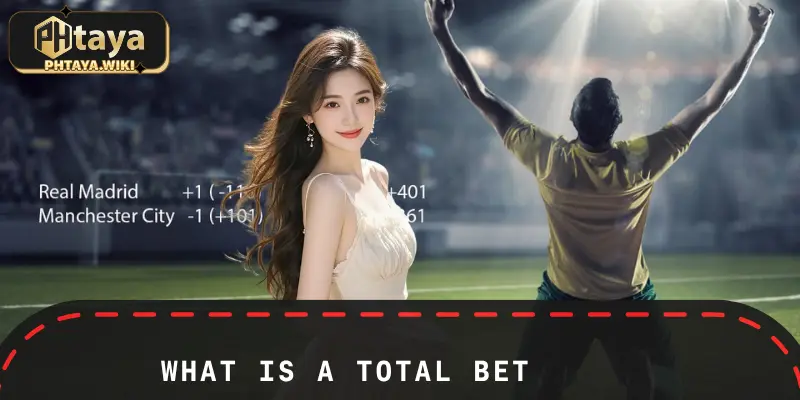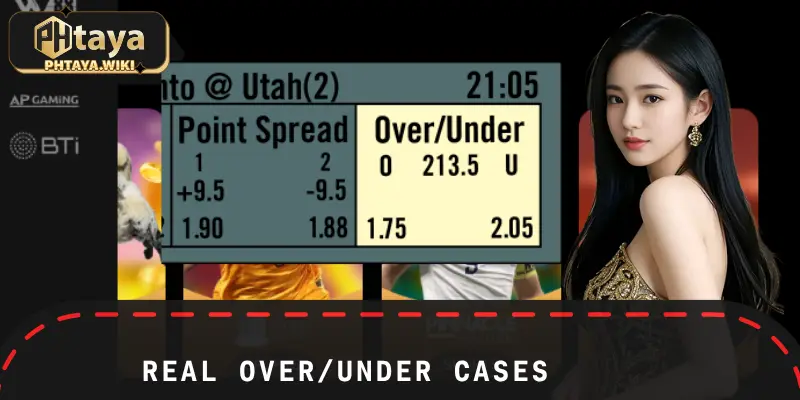Are you seeing Over/Under Odds but feel unsure how to turn them into winning wagers? You’re not alone. This market offers incredible opportunities, but only for those who truly understand it. At PHTAYA, we are pulling back the curtain to reveal exactly how totals betting works and how you can master it. Continue reading to transform your approach.
Understanding the Core Concept: What is a Total Bet?

At its core, a total bet, commonly known as an over/under wager, is one of the most straightforward bets you can make. Instead of picking a winner, you are simply wagering on the combined total score of both teams in a game. We, the sportsbook, set a projected total, and you decide if the actual final score will be over or under that number.
This form of betting removes the complexity of point spreads and moneylines, focusing purely on the offensive and defensive dynamics of the game. It’s a direct question: will the game be a high-scoring affair or a defensive battle? Your goal is to accurately predict the flow and scoring pace of the contest, making Over/Under Odds a fascinating challenge of analytical skill. Understanding this fundamental concept is the first step toward leveraging total points betting explained for consistent results.
How Do Over Under Bets Work? A Step-by-Step Breakdown
Engaging with Over/Under Odds is a simple process once you grasp the mechanics. When you open our platform, PHTAYA, you will see a game listing. Alongside the point spread and moneyline, you’ll find the total, represented by a number like 48.5 for a football game or 220.5 for a basketball game. The half-point (.5) is crucial as it prevents the possibility of a tie or a “push.”
Your task is to choose one of two outcomes. If you bet the “Over,” you win if the combined score of both teams exceeds the set total. If you bet the “Under,” you win if the combined score is less than the total. The simplicity of this wager is what makes Over/Under Odds so popular, but success is found in the strategic analysis that informs your decision.
Reading the Numbers: Understanding Over Under Lines and the Vig
When you see Over/Under Odds, the total itself is only half the equation. Next to the total (e.g., 48.5), you will see another number, typically -110. This number represents the odds and includes the sportsbook’s commission, known as the “vig” or “juice”.
What -110 means is that you must risk $110 to win $100. This 10% margin is how the house ensures a profit regardless of the outcome. Understanding the vig is essential for proper bankroll management and recognizing the true cost of a wager. Without it, the odds would be even (+100), but the vig is the standard price of placing a bet.
Practical Examples of Over/Under Odds in Action

To clarify, let’s look at two scenarios:
- Football Example: The Kansas City Chiefs are playing the Baltimore Ravens, and the total is set at 50.5. You believe it will be a high-scoring game and bet the Over. The final score is 28-24. The combined total is 52, which is greater than 50.5, so your bet on the Over/Under Odds wins.
- Basketball Example: The Los Angeles Lakers are facing the Boston Celtics with a total of 225.5. You anticipate a strong defensive performance and bet the Under. The final score is 110-105. The combined total is 215, which is less than 225.5, meaning your wager is successful.
What is an Over Under Push Explained? Getting Your Stake Back
A “push” occurs when the final combined score is exactly the same as the sportsbook’s total. For this to happen, the line must be a whole number (e.g., 48). If the total is 48 and the final score is 28-20 (a total of 48), all bets on both the over and the under are refunded.
At PHTAYA, we often use half-points in our Over/Under Odds to avoid a push and ensure there is always a decisive outcome. However, understanding what a push is remains a key piece of knowledge for any participant in sports wagering.
Winning with Totals: An Effective Over/Under Odds Betting Strategy
Success with Over/Under Odds is not about luck; it’s about sharp analysis and a disciplined strategy. Casual bettors often favor the “over” because it’s more exciting to root for points. This public betting tendency can create value on the “under” for sharp bettors who focus on data, not emotion.
A robust over under betting strategy involves moving beyond simple intuition and digging into the factors that truly dictate a game’s scoring potential. At PHTAYA, we empower our users by providing the tools and information needed to develop a strategic edge. Mastering Over/Under Odds requires a commitment to research and an understanding of game dynamics.
Key Factors to Analyze Before Placing Your Wager
Before placing any wager on Over/Under Odds, a thorough analysis is required. Effective sports handicapping involves evaluating multiple variables to gain a complete picture of how a game might unfold. Here are the essential factors we recommend analyzing:
| Factor | Description |
| Pace of Play | Teams that play at a faster pace have more possessions, which naturally leads to more scoring opportunities. Conversely, slower, more methodical teams can drain the clock and keep the total score down. |
| Offensive & Defensive Efficiency | Look at points scored per possession and points allowed per possession. A matchup between two highly efficient offenses and two porous defenses is a strong indicator for an “over” bet. |
| Key Player Injuries | The absence of a star offensive player can drastically reduce a team’s scoring potential. Similarly, a missing defensive anchor can open the door for the opposing team to score more easily. |
| Weather Conditions | For outdoor sports like football, weather is a significant factor. High winds, heavy rain, or extreme cold can suppress scoring by making it difficult to pass, kick, and hold onto the ball. |
| Recent Form & Trends | Analyze a team’s scoring trends over the last several games. A team on a hot streak offensively is more likely to contribute to a higher game total, while a team in a slump might drag the score down. |
Over Under Football Betting vs. Over Under Basketball Betting: Key Differences

While the concept of Over/Under Odds is the same across sports, the strategic approach for football and basketball differs significantly.
In over under football betting, scores are lower, and each possession is more critical. Factors like field position, special teams play, and defensive touchdowns have a huge impact. Weather plays a much larger role, and the pace is generally slower and more deliberate.
Conversely, over under basketball betting is defined by high volume and fast pace. Scoring runs are common, and individual player matchups can heavily influence the game total. The absence of weather as a factor makes it a purer statistical analysis of offensive and defensive matchups.
How to Bet Over Under by Tracking Line Movement
Line movement refers to the change in the Over/Under Odds from the time they are first released to the start of the game. This movement is caused by several factors, including the volume of money being placed on one side, injury news, or weather forecast changes.
By tracking line movement, you can gain insight into what sharp bettors are thinking. If a line moves significantly, it often indicates that professional money is heavily favoring one side. Learning to interpret these movements can be a powerful tool in your Over/Under Odds arsenal, helping you identify value and bet with more confidence.
Conclude
Mastering Over/Under Odds is not about luck, it’s about strategic analysis of the game’s potential pace and scoring. By understanding how totals are set and what factors influence them, you have gained a significant edge. PHTAYA has provided the foundational knowledge you need to approach total points betting with confidence and precision.
